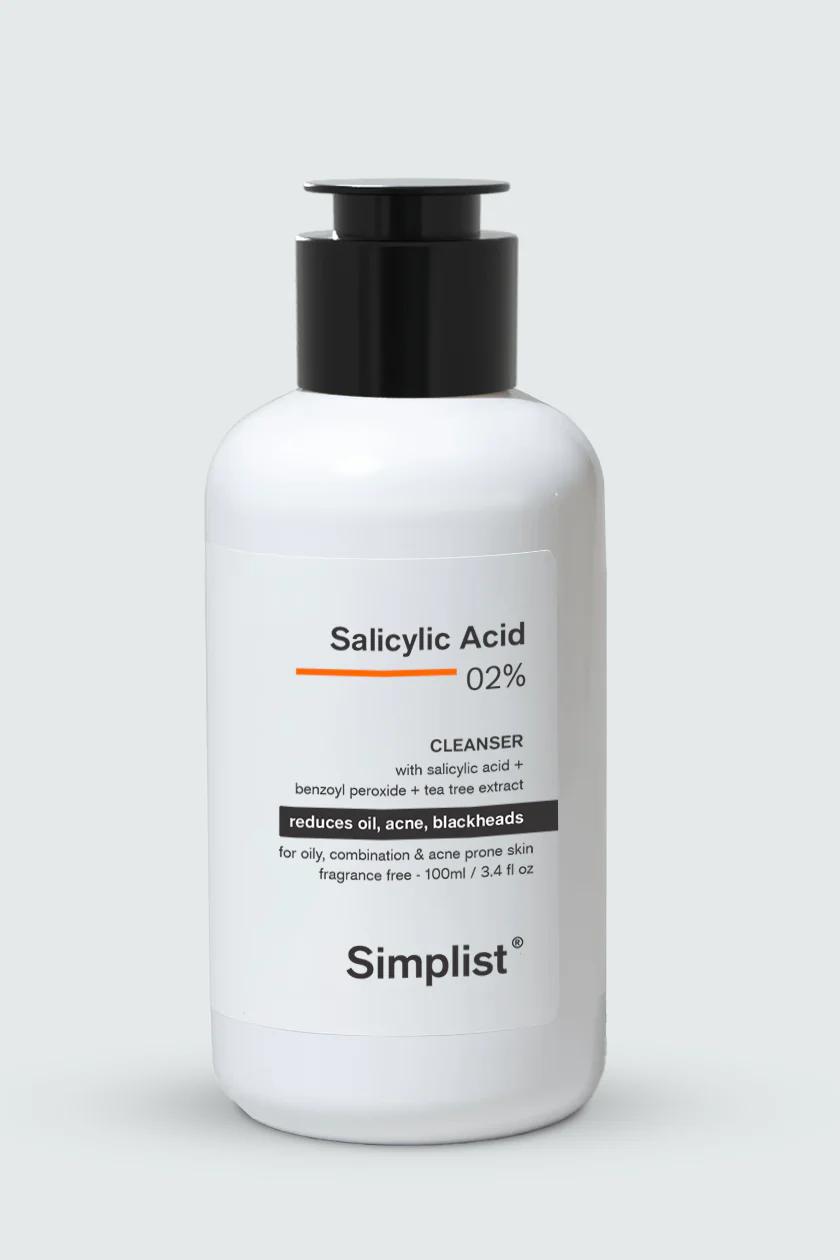Say Goodbye to Acne with This Salicylic Acid Cleanser
Struggling with persistent breakouts, blackheads, or clogged pores? Acne-prone skin requires targeted care, and one of the most effective solutions is a powerful salicylic acid cleanser. As experts in skincare science, we’ve seen how this single ingredient has transformed complexions, one wash at a time. In this article, we’ll dive deep into the benefits, science, and usage of salicylic acid cleansers to help you achieve clear, smooth, and radiant skin.
What Is Salicylic Acid and Why Is It a Game-Changer for Acne?
Salicylic acid is a beta hydroxy acid (BHA) known for its deep pore-penetrating properties. Unlike alpha hydroxy acids (AHAs) which are water-soluble, salicylic acid is oil-soluble, making it the ideal ingredient to break through sebum and remove dirt, dead skin cells, and bacteria from inside the pores.
It doesn’t just exfoliate the skin’s surface—it clears out pores from within, helping to:
- Prevent acne formation
- Minimize blackheads and whiteheads
- Reduce inflammation and redness
- Improve skin texture and tone
Top Benefits of Using a Salicylic Acid Cleanser
1. Unclogs Pores with Precision
Salicylic acid binds to the oils inside your pores, dissolving sebum buildup and dead skin cells. Over time, this results in fewer clogged pores, less acne, and improved skin clarity.
2. Fights Acne-Causing Bacteria
By exfoliating and removing blockages in the skin, salicylic acid also disrupts the environment that acne-causing bacteria thrive in, effectively reducing breakouts and flare-ups.
3. Soothes Inflammation
Mild to moderate acne is often accompanied by inflammation and redness. Salicylic acid has anti-inflammatory properties that calm the skin and reduce irritation.
4. Improves Skin Texture and Tone
Regular use of a salicylic acid cleanser promotes smoother skin, reduces the appearance of enlarged pores, and fades post-acne marks by accelerating cell turnover.
How to Choose the Best Salicylic Acid Cleanser for Your Skin Type
Not all cleansers are created equal. Here’s what to consider when selecting a salicylic acid facial cleanser:
Check the Concentration
Look for a cleanser with 0.5% to 2% salicylic acid. Higher concentrations are more potent and effective for moderate to severe acne, while lower percentages are gentler for sensitive or dry skin.
Consider the Formula
Choose a formula that suits your skin’s needs:
- Foaming cleansers: Great for oily and acne-prone skin.
- Gel-based cleansers: Effective at oil control and deep cleansing.
- Cream-based cleansers: Ideal for dry or combination skin needing gentle exfoliation.
Look for Supporting Ingredients
Some of the best formulations include ingredients like:
- Niacinamide – to calm and brighten
- Tea tree oil – for antibacterial support
- Hyaluronic acid – to maintain hydration
- Aloe vera or chamomile – to soothe irritation
How to Use a Salicylic Acid Cleanser the Right Way
To maximize the results of your acne-fighting cleanser, follow these steps:
- Use twice daily, morning and evening.
- Wet your face with lukewarm water to open the pores.
- Apply a pea-sized amount and gently massage in circular motions for 30–60 seconds.
- Avoid harsh scrubbing which can irritate the skin further.
- Rinse thoroughly and pat dry with a clean towel.
- Follow with toner, serum, and non-comedogenic moisturizer.
Important: If you’re new to salicylic acid, start with once-a-day usage or alternate days to avoid over-drying.
Best Practices to Maximize Acne Treatment Results
Be Consistent
Clear skin doesn’t happen overnight. Use your salicylic acid cleanser consistently for at least 4 to 6 weeks to start seeing noticeable changes.
Hydrate and Moisturize
Salicylic acid can cause dryness, so pair it with a hydrating serum and oil-free moisturizer to keep your skin barrier healthy.
Use Sunscreen Daily
Exfoliants like salicylic acid increase sun sensitivity. Protect your skin by applying broad-spectrum SPF 30 or higher every day—even indoors.
Avoid Mixing With Harsh Actives
Don’t use salicylic acid cleansers alongside products containing retinoids, benzoyl peroxide, or high concentrations of AHAs unless advised by a dermatologist. Overuse can cause peeling or irritation.
Who Should Use Salicylic Acid Cleanser?
This type of cleanser is ideal for:
- Teens and adults with active acne
- People with oily or combination skin
- Individuals struggling with blackheads and whiteheads
- Those with occasional hormonal breakouts
Avoid if you have extremely sensitive or overly dry skin, eczema, or active rosacea—unless recommended by a dermatologist.
Top Recommended Salicylic Acid Cleansers
Here are some dermatologist-approved and user-loved options:
1. CeraVe Renewing SA Cleanser
- 2% salicylic acid
- With ceramides and niacinamide
- Non-comedogenic and fragrance-free
2. Neutrogena Oil-Free Acne Wash
- Classic formula with 2% salicylic acid
- Suitable for daily use
- Cleanses without over-drying
3. Paula’s Choice CLEAR Pore Normalizing Cleanser
- Gentle gel cleanser
- Great for sensitive, breakout-prone skin
- Includes soothing agents
4. La Roche-Posay Effaclar Medicated Gel Cleanser
- 2% salicylic acid
- With zinc and thermal spring water
- Reduces oil and clears acne fast
Real Results: What Users Are Saying
“After switching to a salicylic acid cleanser, my acne started clearing up within 2 weeks. My skin looks smoother and feels cleaner than ever.” – Maria L.
“It’s the only product that keeps my hormonal breakouts in check. It’s become a permanent part of my skincare routine.” – James K.
Final Thoughts: Clearer Skin Starts with the Right Cleanser
Incorporating a salicylic acid cleanser into your skincare routine can make a transformative difference in the fight against acne. It’s an essential first step that not only treats active breakouts but also prevents new ones from forming.
When chosen correctly and used consistently, it becomes one of the most powerful tools for achieving clearer, healthier skin—without the need for harsh treatments or prescriptions.

